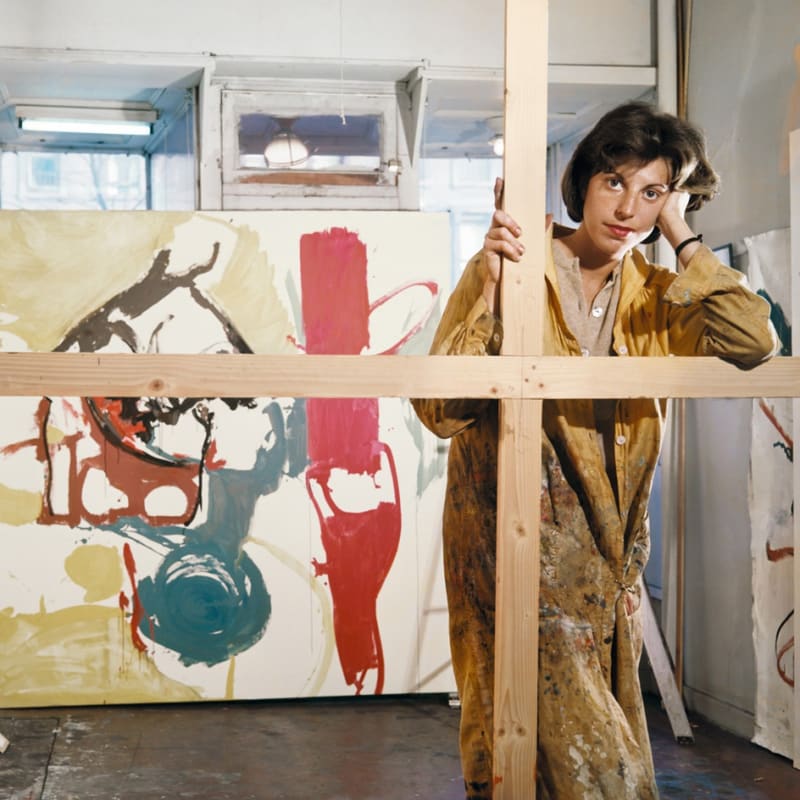"You have to know how to use the accident, how to recognise it, how to control it, and ways to eliminate it so that the whole surface looks felt and born all at once."
-Helen Frankenthaler
Career
Frankenthaler began exhibiting her large-scale abstract expressionist paintings in contemporary museums and galleries in the early 1950s. Frankenthaler's official artistic career was launched in 1952 with the exhibition of Mountains and Sea. Born in Manhattan, she was influenced by Greenberg, Hans Hofmann and Jackson Pollock's paintings. Throughout the 1950s, her works tended to be centered compositions, meaning the majority of the pictorial incident took place in the middle of the canvas itself, while the edges were of little consequence to the compositional whole. In 1957, Frankenthaler began to experiment with linear shapes and more organic, sun-like, rounded forms in her works.
In the 1960s, her style shifted towards the exploration of symmetrical paintings, as she began to place strips of colors near the edges of her paintings, thus involving the edges as a part of the compositional whole. With this shift in composition came a general simplification of Frankenthaler's style. She began to make use of single stains and blots of solid color against white backgrounds, often in the form of geometric shapes. Beginning in 1963, Frankenthaler began to use acrylic paints rather than oil paints because they allowed for both opacity and sharpness when put on the canvas. By the 1970s, she preferred thicker paint that allowed for brighter colors, almost reminiscent of Fauvism. Throughout the 1970s, Frankenthaler explored the joining of areas of the canvas through the use of modulated hues, and experimented with large, abstract forms. Her work in the 1980s was characterized as much calmer, with its use of muted colors and relaxed brushwork.
